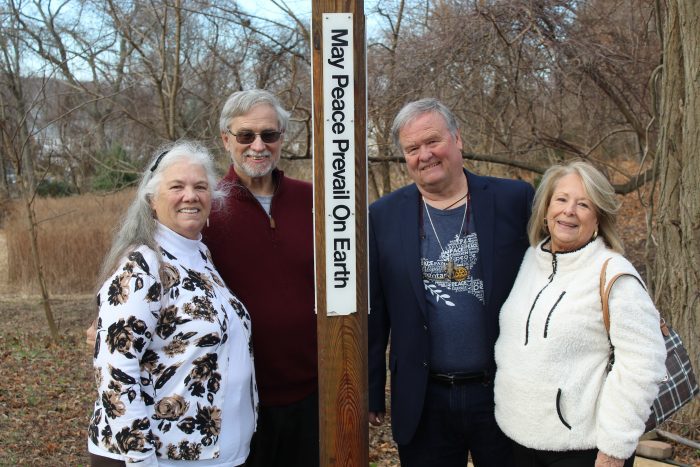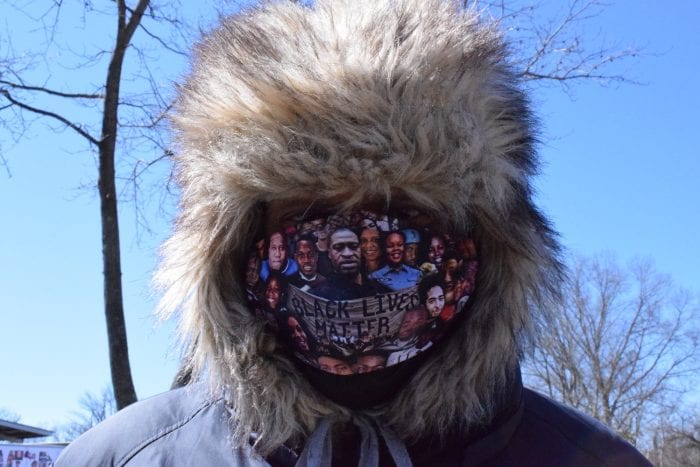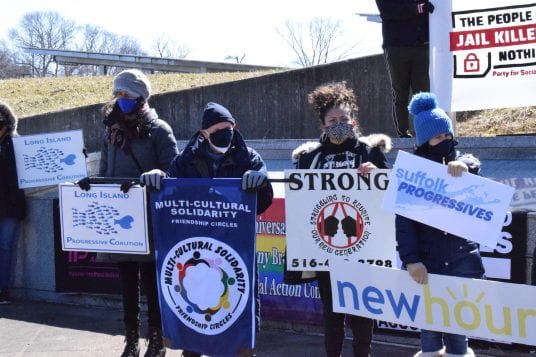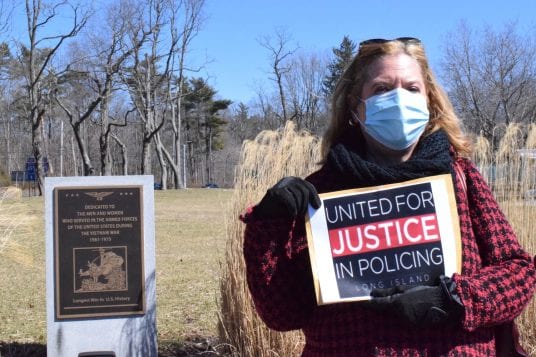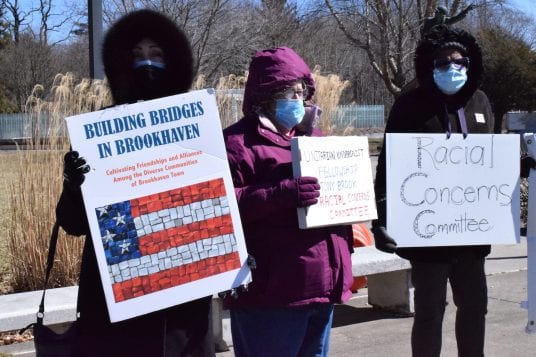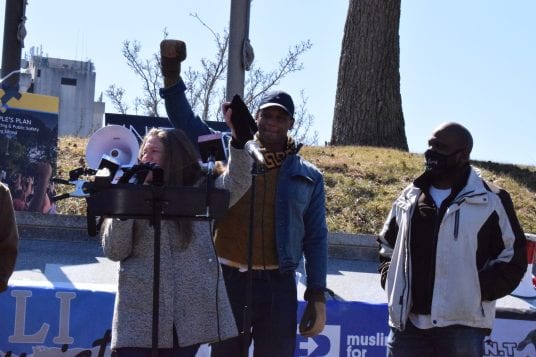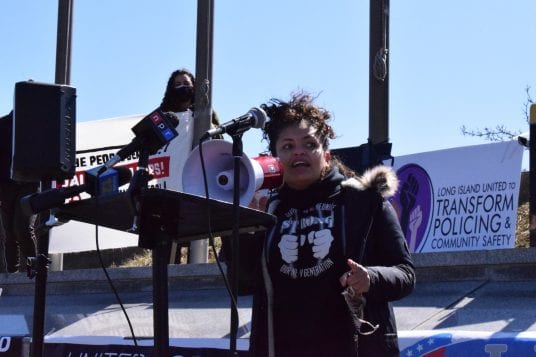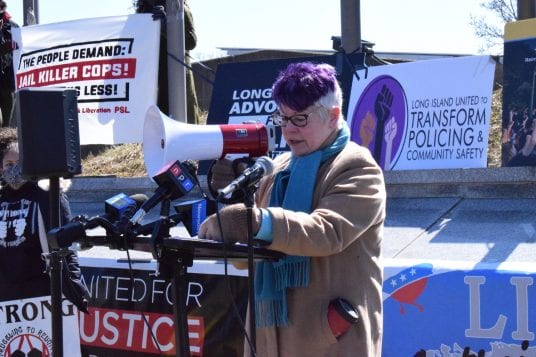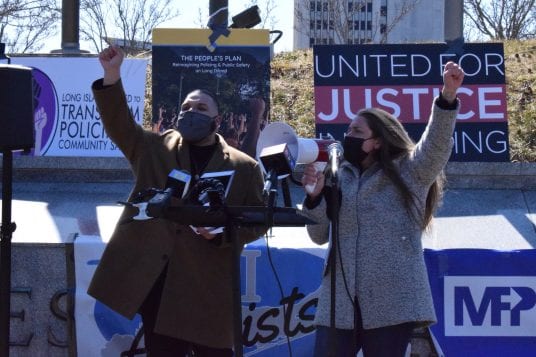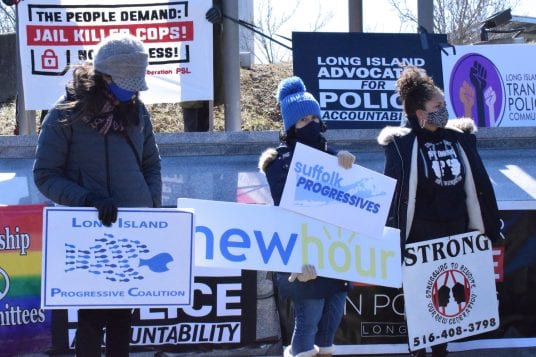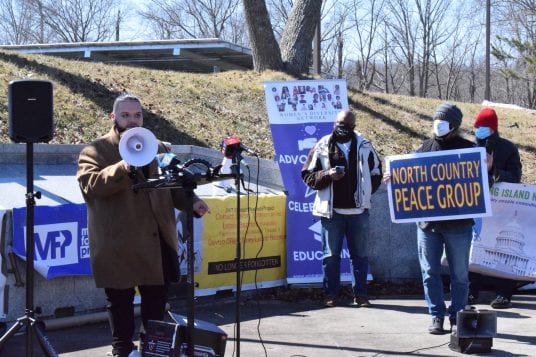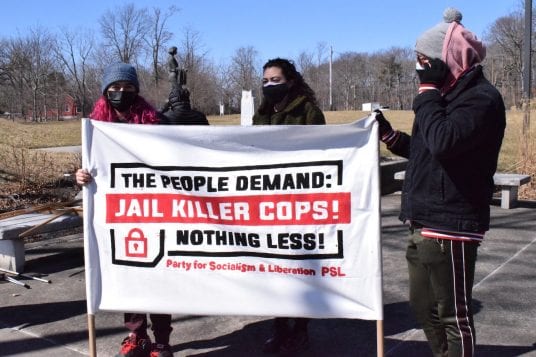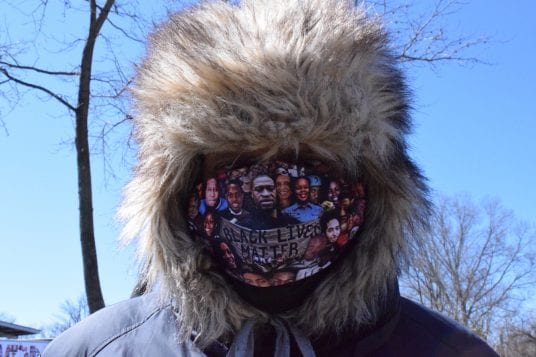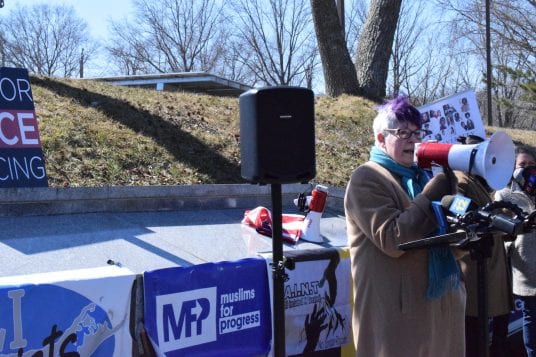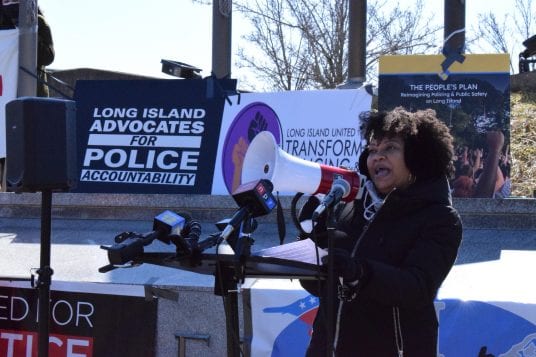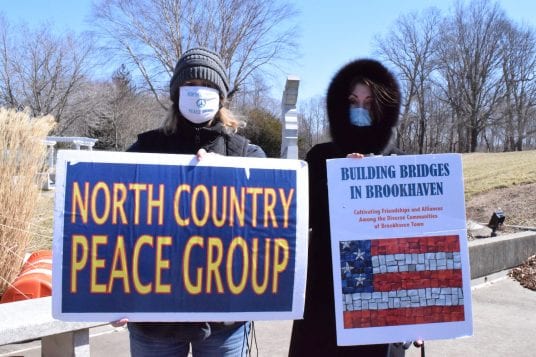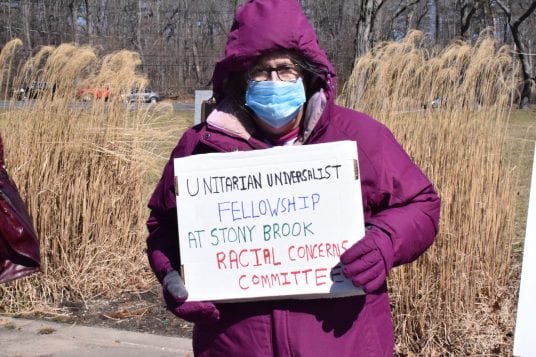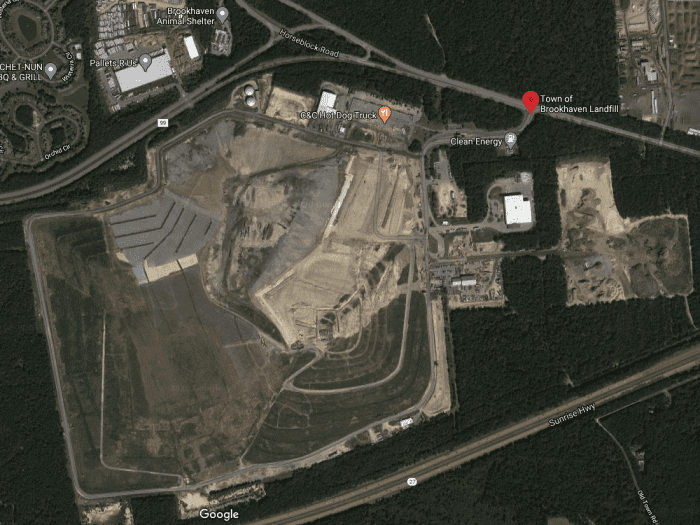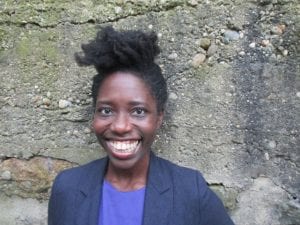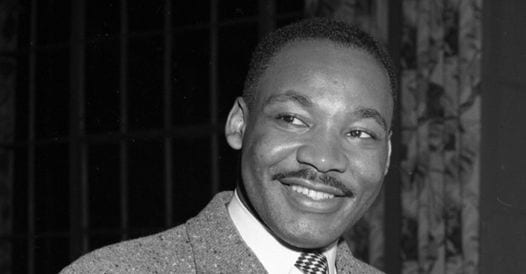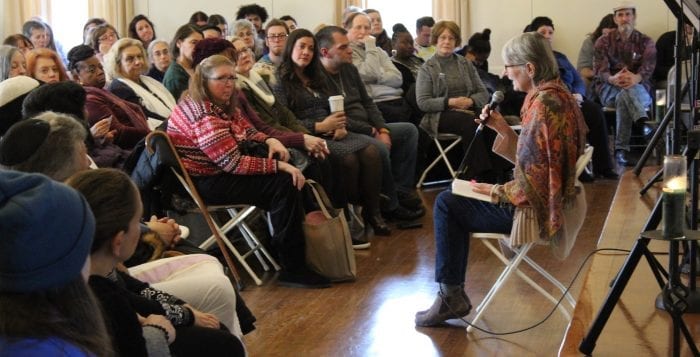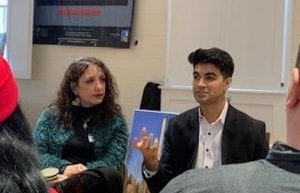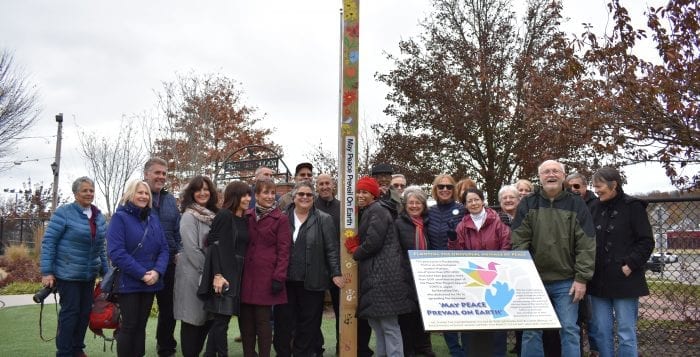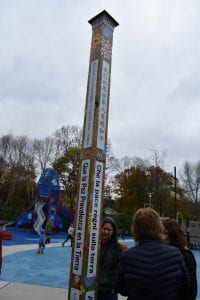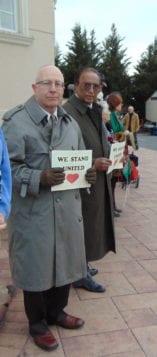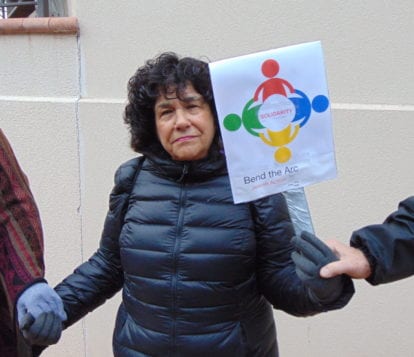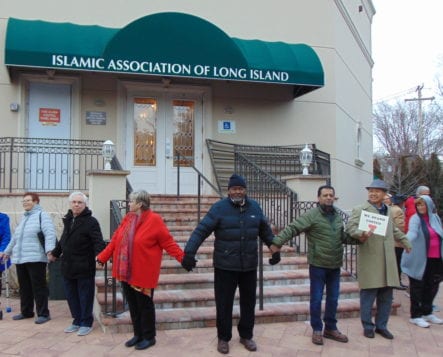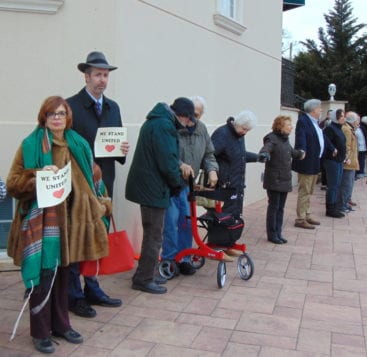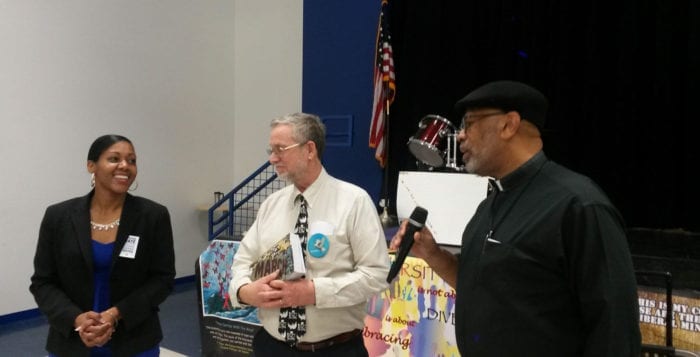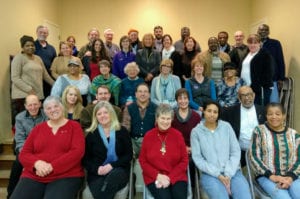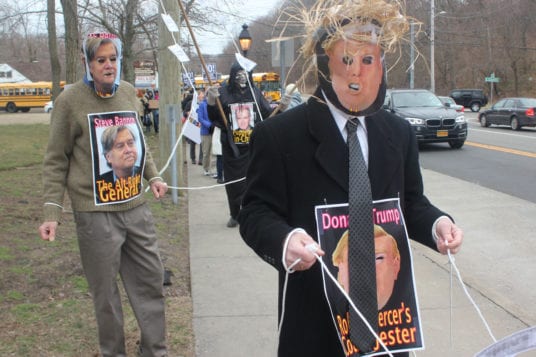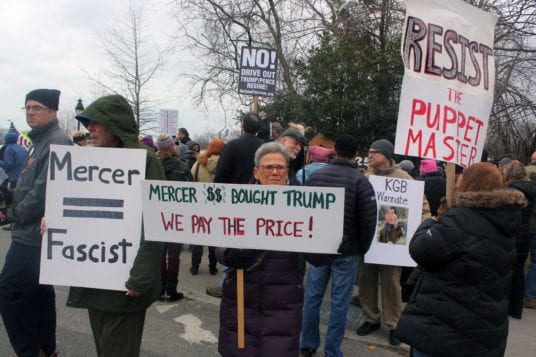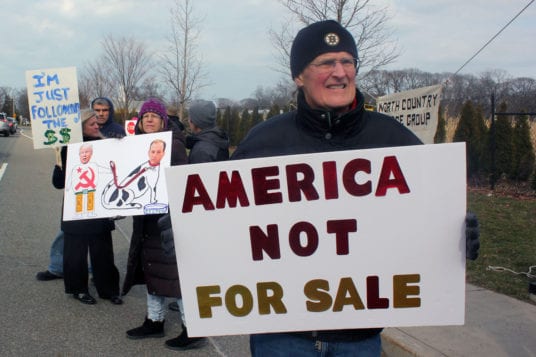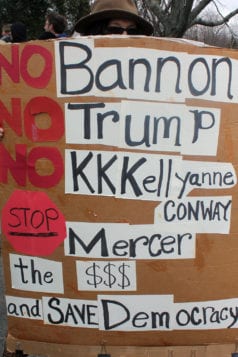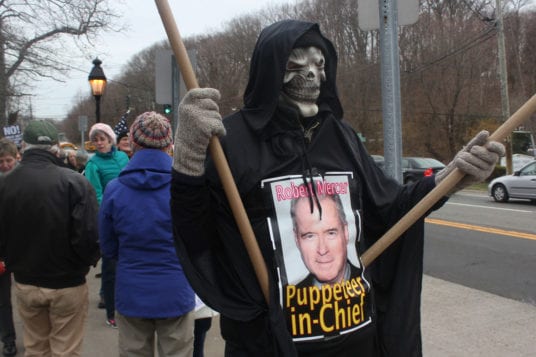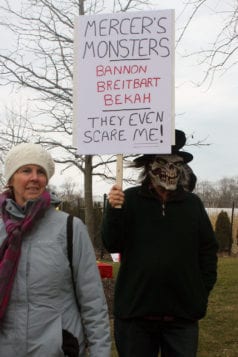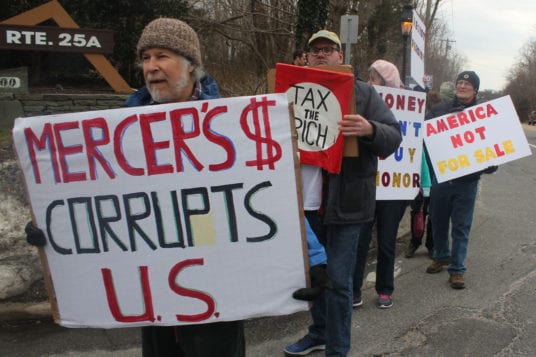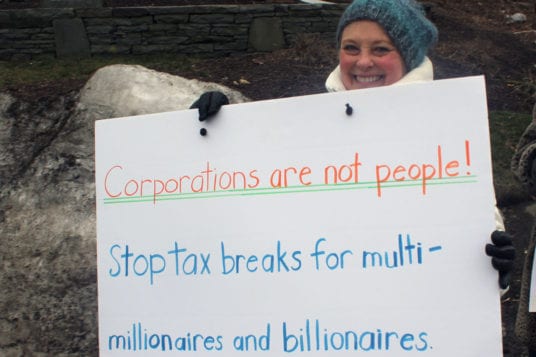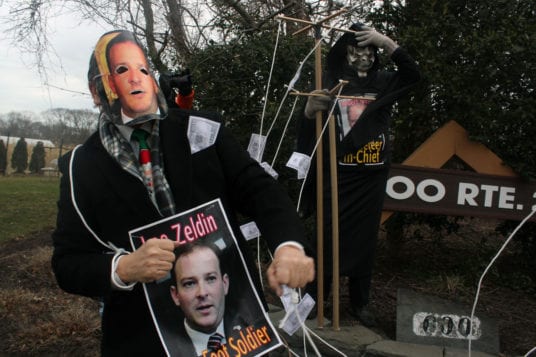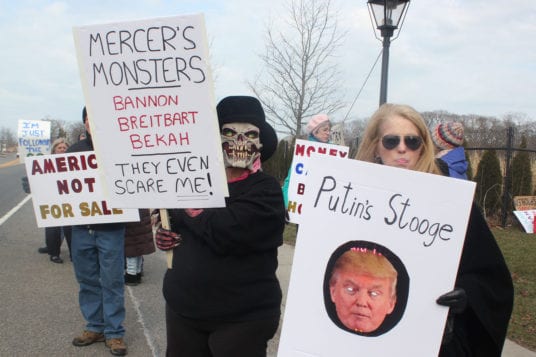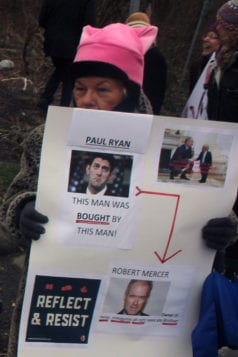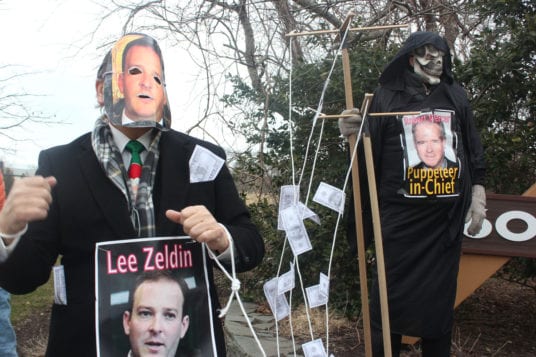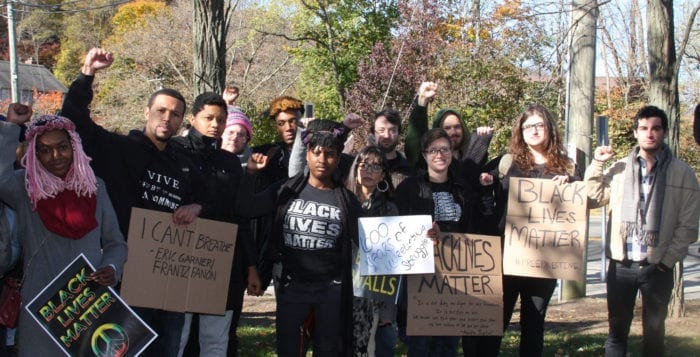Congregants, community members and peace advocates gathered Sunday, Jan. 15, outside the Mount Sinai Congregational Church to erect a Peace Pole.
The ceremony was part of the international Peace Pole Project, a program that has spread to every country with the universal message of global peace.
Kevin Mann, president of the Rocky Point Rotary Club, attended the service. Though not a member of the Congregational Church, he traced the church’s long history championing various social causes throughout American history.
“Before the term ‘social activism’ was invented, this congregation was doing it,” he said. “This congregation’s history goes all the way back to being a part of the Underground Railroad. They also had the first free men of color as members,” adding, “They were always ahead of the curve and involved in every single social activism movement.”
Sunday’s peace ceremony carried symbolic significance as well, marking the 94th birthday of Dr. Martin Luther King Jr.
Tom Lyon is a congregation member and co-founder of Building Bridges in Brookhaven. “Martin Luther King did get the Nobel Prize for Peace,” Lyon said. “That wasn’t just about the United States. That wasn’t just about segregation. He talked about universal love, unrequited love. … That’s kind of the concept: the universality of peace.”
He added that King “spoke out against the Vietnam War, which became very controversial. That was in 1967, exactly a year before he was killed.”
To Lyon, peace is often caricatured in popular culture as passive, even pacifistic. The example of MLK, he said, awakens one to the possibilities of peace, something he viewed as highly active and courageous.
“Martin Luther King was always talking about how being a person of peace takes much more courage, much more strength, than a person who just gives into their anger or acts out violently,” Lyon said. “To seek peaceful solutions often is more difficult, more challenging, but in the long run, that’s what we feel we’re called to do.”
Corridor of Peace
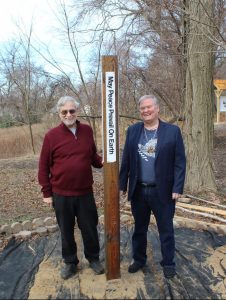
The Peace Pole planted at the congregation is part of a major local effort tied to the Peace Pole Project, the proposed Corridor of Peace, coordinated by the Rotary.
“We are attempting to declare a Corridor of Peace, which is [routes] 25 and 25A and four school districts at the moment — Rocky Point, Miller Place, Shoreham-Wading River and Longwood — that will designate how they want to make their communities a more peaceful environment,” Mann said.
Through this initiative, Mann hopes community members can better understand the problems unique to their area and work toward positive change. “You have very common themes and issues — food insecurity, inequality, housing, opioid addiction — many things,” Mann said.
Through the project, he sees an opportunity “to continue to increase the quality of life for people in the corridor.”
Lyon added to this sentiment and vision. He said members of the corridor could find unity through shared values and a mutual desire for peace. “Hopefully, people in the communities of peace will be reminded that’s the connection with the Peace Pole Project,” he said. “You see one in front of a couple of stores or another in the neighborhood where you are walking. It’s just a reminder.”
Conflict abroad
Mann and Lyon defined the Peace Pole Project as apolitical, a program committed to the mantra, “May peace prevail on Earth.” However, both acknowledged the ongoing human conflicts around the globe, namely the Russo-Ukrainian War.
Lyon said the Peace Pole Project reminds Americans of the need to promote peace, especially when the United States is not at war. “It’s sometimes easy to be a little complacent when things are going good for us as Americans,” he said. However, the project is “a universal thing,” and the cause for universal peace applies equally to Americans as it does to Ukrainians and Russians.
Outlining the Rotary’s response to Russian belligerence, Mann said the club has sponsored training for trauma nurses and has even brought a 9-year-old Ukrainian girl to Long Island for heart surgery.
“There’s no political stand involved, but there are people in need,” he said. “We’ve been very, very active in the Ukrainian concept … and bringing focus to the Ukraine issue.”
Finding peace‘The military is a business that drives economies, unfortunately.’ — Kevin Mann
Despite the war and violence dominating the headlines and news cycles, Mann maintains that humans are naturally peaceful. Drawing from the teachings of Mahatma Gandhi, he said peace usually endures for long periods of human history, with brief interruptions of war.
“For long periods of history, peace has prevailed,” Mann said. “For short periods of history, war has broken out.”
Finding a silver lining in those interruptions of war, Mann added that technological advancements had accelerated during wartime. “One of the byproducts of war breaking out, as bad as it has been, is that it has led to technological and medical advancements that have helped humanity.”
Defining some of the problems inherent to these times, Mann said high-speed communication and mass media culture now spread news and images of war quickly and widely. At the same time, war remains a lucrative international business.
“The military is a business that drives economies, unfortunately,” he said. “Peace hasn’t gotten that kind of focus internationally.”
As warmongers in the press continue to drive nations into battle, and as arms dealers continue to profit from the blood spilled on the fields of human strife, Mann maintains that there is still room for hope.
“Polio is almost being totally eliminated, and malaria is well on its way to being controlled,” he said. “Over the last hundred years, people have worked to make those things happen,” adding, “They’ve happened despite diverting resources to other causes, so I think there’s great room for optimism.”

